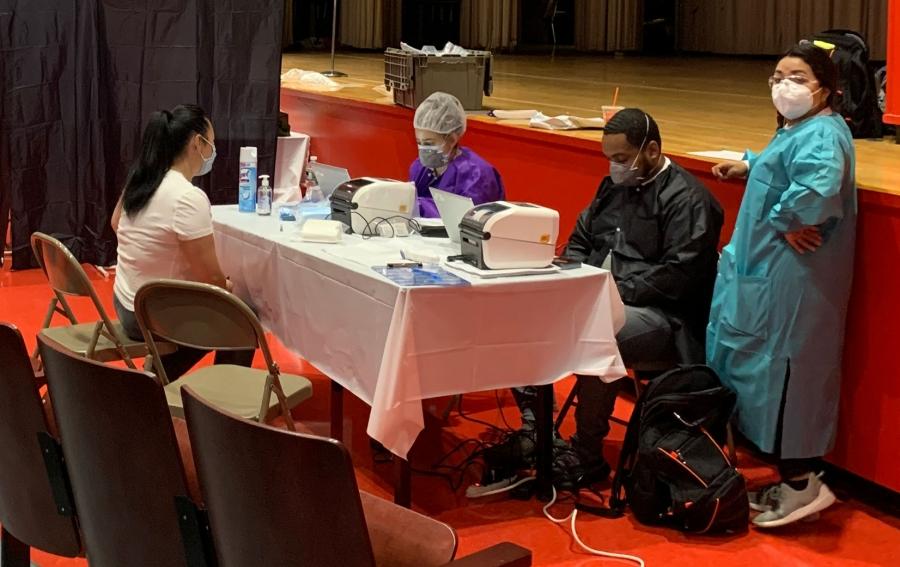UFT: Schools in COVID hot spots might need to close

New York Health and Hospitals on Sept. 25 deployed a COVID-19 mobile testing van to Brooklyn's FDR HS, a school in one of the zip codes that has seen a surge in the virus. One hundred and seven staff members were voluntarily tested.
UFT President Michael Mulgrew on Sept. 29 called for the city to close 78 New York City public schools in ZIP codes facing a surge in COVID-19 cases if infection rates cannot be quickly contained and reduced.
New York City's elementary and K–8 schools opened their doors to students for in-person instruction on Sept. 29, just as these hot spots drove the city's overall positive test rate for COVID-19 above 3% for the first time in months.
"We worked hard to get our public schools to a safe place and so far there has been no indication of widespread infection in school buildings," said Mulgrew. "But the same cannot be said for some ZIP codes in New York City, where the infection rate is escalating."
Under the Sept. 1 reopening agreement reached between the city, the Department of Education and the UFT, the city committed to close school buildings and move to remote instruction for all students if the percentage of positive tests in New York City is equal to or more than 3% using a seven-day rolling average.
The reopening agreement also states that an uptick in positive cases in a particular ZIP code must trigger an aggressive testing program in that area, including the schools.
Starting on Sept. 24, mobile testing units run by the city's Health and Hospitals Corporation have been sent to schools on a rotating basis in the seven ZIP codes in Brooklyn and the two in Queens to provide free and quick testing for the coronavirus.
The van set up at Franklin Delano Roosevelt HS in Bensonhurst/Mapleton, Brooklyn, on Sept. 25.
"We had a good start. They got there prompt and early to test people," said James Duncan, the UFT Brooklyn high schools representative. The FDR HS chapter leader joined the principal to hand out testing paperwork to staff waiting in line so testing could proceed quickly. The school adjusted its teaching schedule to make time for the process.
Duncan said 107 people were tested at FDR HS that day.
"Everyone who wanted to be tested was tested," he said. "They were happy that their union was there — they saw their concerns were being addressed."
One of the hundreds of staff members tested in schools in the nine ZIP codes has tested positive so far, according to UFT officials.
According to the city's Health Department as of Sept. 29, the most affected neighborhoods include the Gravesend/Homecrest area with a 6.72% positive rate, Midwood at 5.53%, Borough Park at 5.26%, Bensonhurst/Mapleton at 5.15%, Flatlands/Midwood at 4.08%, Sheepshead Bay at 4.05%, Edgemere/Far Rockaway at 3.98%, Kew Gardens at 3.61% and Kew Gardens Hills/Pomonok at 3.04% positivity.
The state has identified a total of 15 New York City ZIP codes with COVID-19 positivity rates over 3%, including two in Staten Island.
"The city can't sit by and let the virus spread in these or other ZIP codes for days until it drives the overall city rate above the seven-day threshold," said Mulgrew. "No neighborhood is a bubble, but we have a better chance of stopping the spread of the virus across the city by responding aggressively to new clusters."
